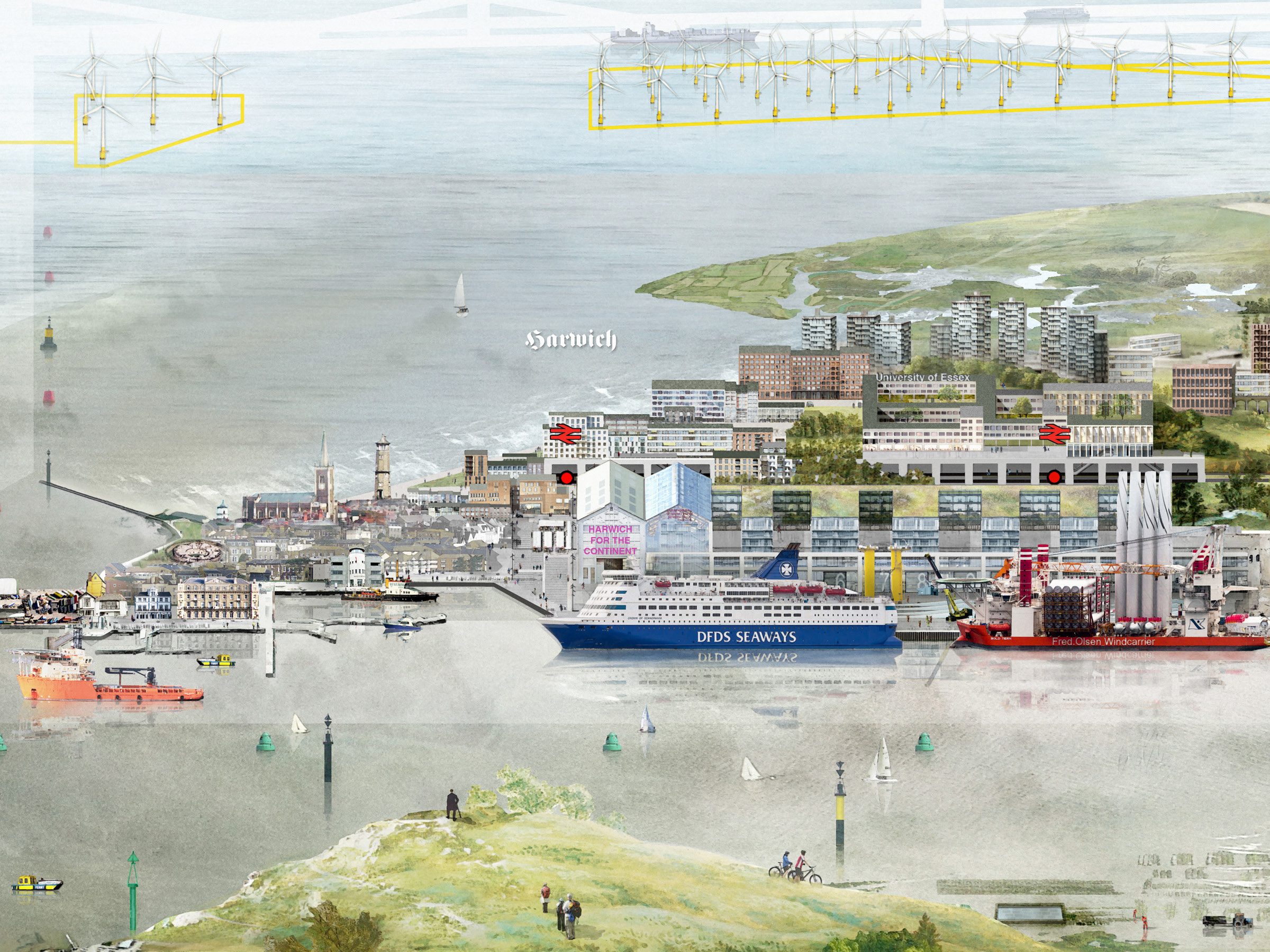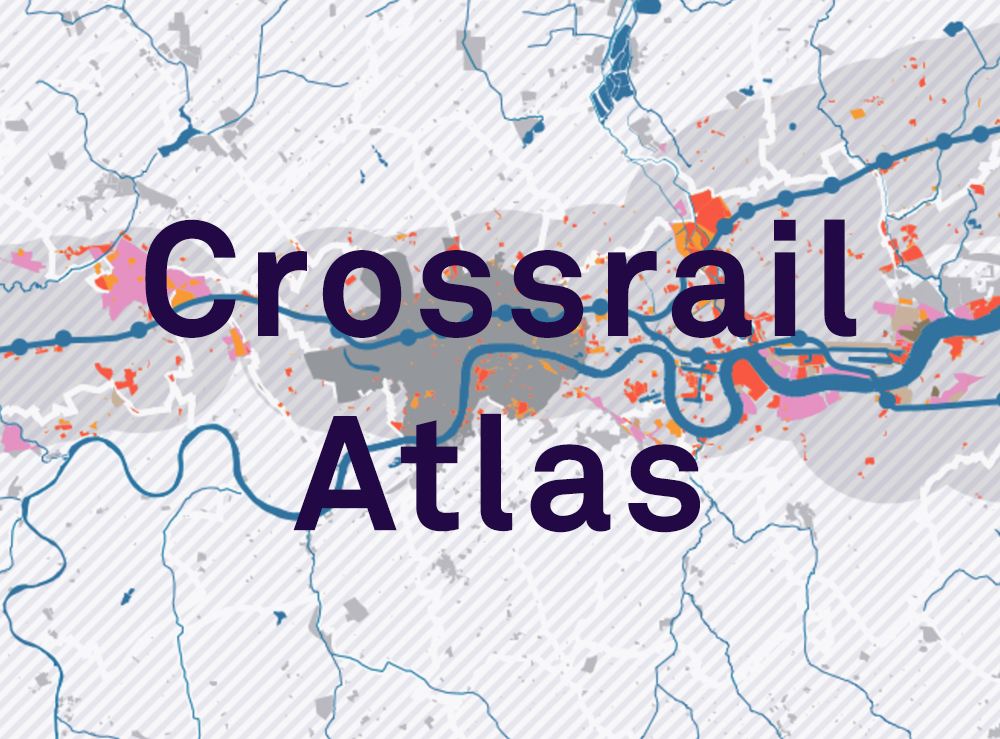By 2018 there will be one million fewer affordable homes in the UK than there were in 1980, while the population will have grown by 7 million. Invited to speculate on the UK's housing crisis, we concluded that what we faced was rather a crisis of imagination in articulating how we live together as a society. In thinking of how it could be other, we wanted to explore the idea of the enabling state. Travelling on East Anglia's slow trains, one passes hundreds of neglected tracts of land and towns suffering from decades of underinvestment. We look across these under-utilised and wasteful railway connections, imagining this as a key network for enabling state investment to catalyse bottom-up partnerships: from investment in housing by local councils, private tract developers, and self builders (unusual in the UK context). The exhibited illustration tests this proposition along the River Stour the east coast Port of Harwich.
Test

Stour City is a proposition for a new city of 60,000 along the River Stour and the Port of Harwich in East Anglia. Based around the urbanisation and intensification of existing rail and port infrastructure, as well as a productive economy, the proposal illustrates the capacity of an 'enabling state' to establish an innovative city, keyed to its particular location. The dismantling of the UK State's strategic planning and building role has been paralleled with the sale of public utilities. The market, left to its own devices, is poor at dealing with risk, and tends towards the creation of monocultures. The market has also failed to fill the lacuna caused by the cessation of a public housing programme. So as an alternative to the status quo, what might the Enabling State look like?
We found inspiration in Lorenzetti's Allegory of Good and Bad Government - a fresco in the Palazzo Publicca, Sienna. As opposed to the fragmented war-torn bad state, Lorenzetti depicts the good state as establishing an ethical horizon: providing leadership, synthetically establishing infrastructure, promoting social justice, and creating a cohesive identity through powerful shared public space.


We took a readymade system and imagined using these under-utilised railway connections as a network for enabling state investment, to catalyse bottom-up partnerships: from investment in housing by local councils, private developers and self-builders. Harwich is related to a remarkable set of North Sea maritime cities: all of which have universities and strong mixed economies. By contrast, Harwich and its neighbouring villages along the Stour lack confidence and critical mass. Our Stour City proposal represents an idea of a city established through process, catalysing a mix between top down and bottom up planning methods, between formal and informal economies. Imagined at the scale of a 'parish' a city can organise - through a programme of green quantitive easing - CHP networks, waste collection, storm water attenuation, water collection and storage, energy storage and load sharing - all of which is impossible in an atomised society.



